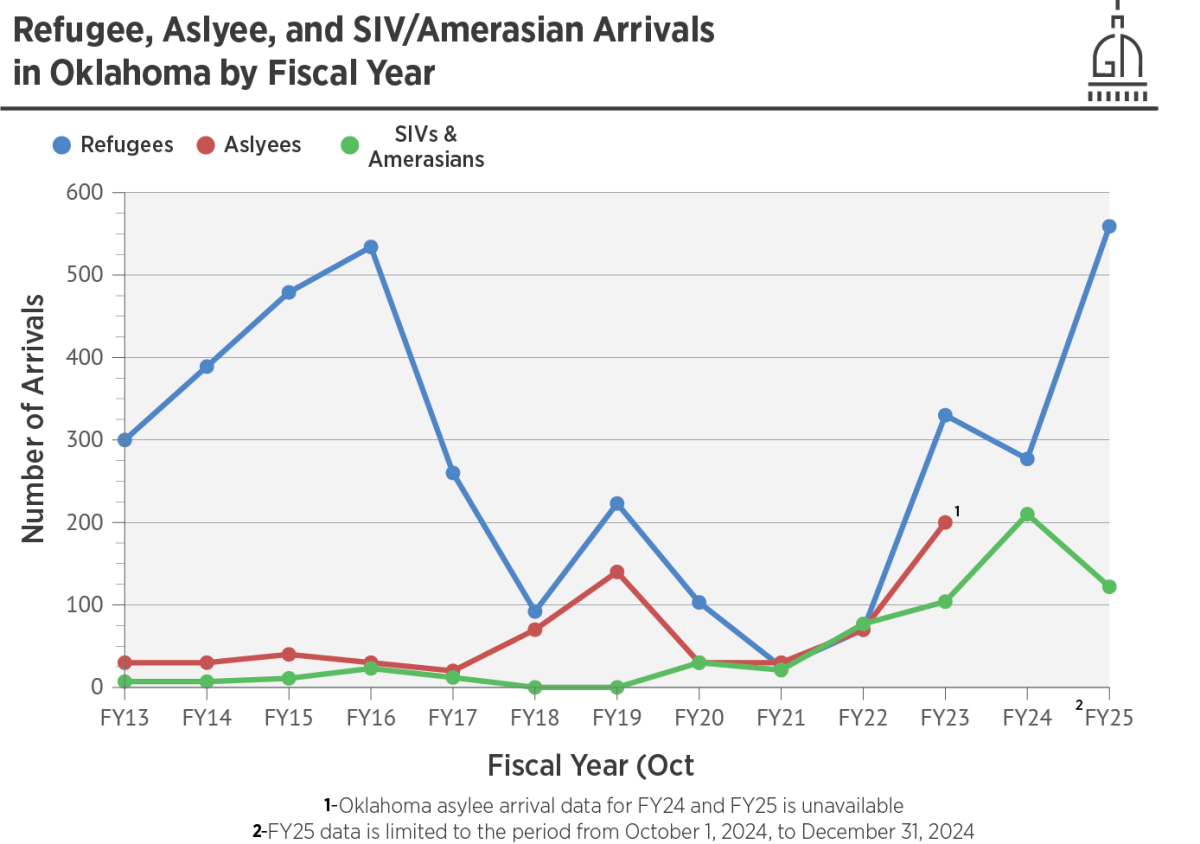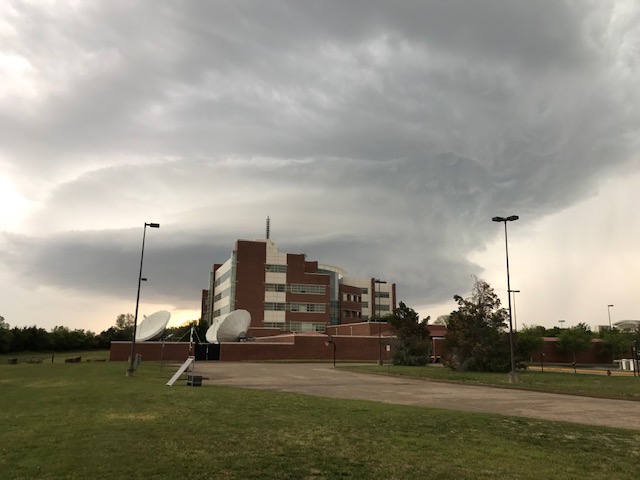WASHINGTON – The Cheyenne and Arapaho Tribes are looking to Congress to gain ownership of land lost centuries ago in order to build an amusement park just west of El Reno.
“I think that [the proposed park] would really support not only the tribes in an impactful way, but it would help the city and the community,” said Cheyenne and Arapaho Gov. Reggie Wassana.
Plains Heritage Park, an entertainment venue meant to draw people to western Oklahoma, is proposed by the tribes to be built on about 2,500 acres of land currently owned by the USDA. The park will include a living history museum and amusement facilities such as rides and shops. Plains Heritage Park would be more than 10 times the size of Six Flags Over Texas, which is on 212 acres in Arlington,Texas.
The Federal Correctional Institute, a medium-security facility that occupies about 1,000 acres near Fort Reno, had until recently used part of its land as a dairy farm where inmates were taught agricultural skills. But according to the Federal Bureau of Prisons, the dairy program has been dismantled.
The land used for the dairy operation spanned more than 3,600 acres and produced about 3,100 gallons of milk per day, according to the Federal Bureau of Prisons. The tribes are hoping the FBP will offer to turn some of the land back to them.
In a statement issued nearly two weeks ago, a spokesman for the BOP, who declined to be interviewed, emailed: “The Federal Bureau of Prison’s (FBOP) Federal Prison Industries no longer operates dairy farms.”
The spokesman declined further comment.
Today, the tribes feel as though they are still owed the land that was promised to them decades ago. However, Congress argues that since the tribes were paid, the government is no longer required to return the land.
The proposed amusement park aims to provide El Reno with the means to build its economy. Those who know of the project are optimistic of the possibilities. Tribal leaders are looking to U.S. Rep. Frank Lucas of Cheyenne, a Republican and the senior member of Oklahoma’s congressional delegation, for help.
The Cheyenne and Arapaho Tribes have been looking for a compromise but have found it difficult to agree with Lucas, who is not favorable to the land transfer.
“This was a fight about property rights,” said Richard Grellner, a native rights attorney in El Reno who has been working on regaining the land for the tribe for more than 30 years.
The USDA land and the prison land are both part of Fort Reno, a plot of about 9,500 acres of land that was given to the Cheyenne and Arapaho Tribes in 1869 by executive order. According to the Indian Claims Commission, the land was then transferred to the military in 1883, to be used for military purposes exclusively.
The Indians Appropriations Act of 1892 and the Fort Reno Indian Reservation Act of 1892 gave the tribes a $1.5 million settlement for the tribes1869 reservation which spans 5 million acres. In 1946, the Indian Claims Commission Act paid an additional $15 million as a final settlement.
However, the tribes claim they were never paid for 9,500 acres at Fort Reno due to the land still being under military jurisdiction at the time of the settlement. The tribe’s claim was backed up by a 1999 opinion from the U.S. Interior Department which found Fort Reno “wasn’t included in the settlement and that the tribes have a credible equitable claim.”
In 1937, the Justice Department was given 1,000 acres at the southeast corner of the 9,500 acre-Fort Reno tract for a prison. Inmates of Federal Correctional Institute El Reno Satellite Camp not only until recently spent their time behind bars, but farming and milking cows.
“What is amazing is how over the past several decades the forces [government] against the return have been able to confuse what exactly was paid for at $3.35 an acre and what was not included because it was still being used for special use purposes like military,” Grellner said.
However, Lucas thinks it’s important for the land to remain under the USDA, to continue federal research focused on climate and agriculture.
Lucas recently won a $1.2 million appropriation in the agriculture appropriations bill for the Agricultural Research Service Oklahoma and Central Plains Agricultural Research Center Greenhouse Restoration Project El Reno. He plans to use it to continue climate and agricultural research at Fort Reno.
Currently, Agricultural Research Services is funded by the government to conduct different fields of research across the country to find solutions to agricultural problems that affect Americans.
At El Reno, the research services has developed an Agroclimate and Hydraulic Research Unit, a Livestock-Forage and Pasture Management Research Unit and a Peanut and Small Grains Research Unit.
Looking for better ways to develop sustainable practices when it comes to raising cattle and fresh water usage, Lucas says continuing these operations would be the most beneficial use of the land.
“With an increasing amount of potentially hostile foreign investment in U.S. farmland, protecting America’s agriculture industry becomes more and more paramount to our national security,” Lucas said in a press release.
To date however, the only Oklahoma land owned by a Chinese company in USDA’s records is a combined 2,571 acres held by Smithfield Foods, a large pork producer that moved into the state several years ago, according to an investigation by Investigate Midwest, an investigative research project based in Champaign, Illinois. Smithfield has been based in Smithfield, Virginia, since its founding in 1936. It was acquired in 2013 by Shuanghui International.
The fifth National Climate Assessment is also a project from the research services at Fort Reno. The assessment focuses on climate research for the Southern Plains, including wildfire risk and forecasting and testing climate tools.
However, some El Reno residents believe funding and property for funding research is redundant.
“People are kind of, I think we’re getting kind of worn out,” said Ray Dyer, editor of the El Reno Tribune. “Seems like everybody is doing climate research.”
The Cheyenne and Arapaho governor is still hoping Lucas will work with the tribes to help kickstart Plains Heritage Park.
“There’s multiple facets. First, there’s a job creation that we could have an industrial area that would actually generate jobs and it would be well-paying jobs, and the aspect of entertainment it will give people in Oklahoma and Kansas, Texas,” Wassana said.
“We’ve asked Rep.Lucas for his support, and he was kind of vague and said he would think about it,” Wassana said.
“I think everybody around the city has been supportive. I know the past superintendent of the schools has been supportive, the newspaper has been supportive, the previous mayor was supportive and this mayor, Steve Jensen, is supportive as well,” Wassana said.
Gaylord News is a reporting project of the University of Oklahoma Gaylord College of Journalism and Mass Communication. For more stories by Gaylord News go to GaylordNews.net







